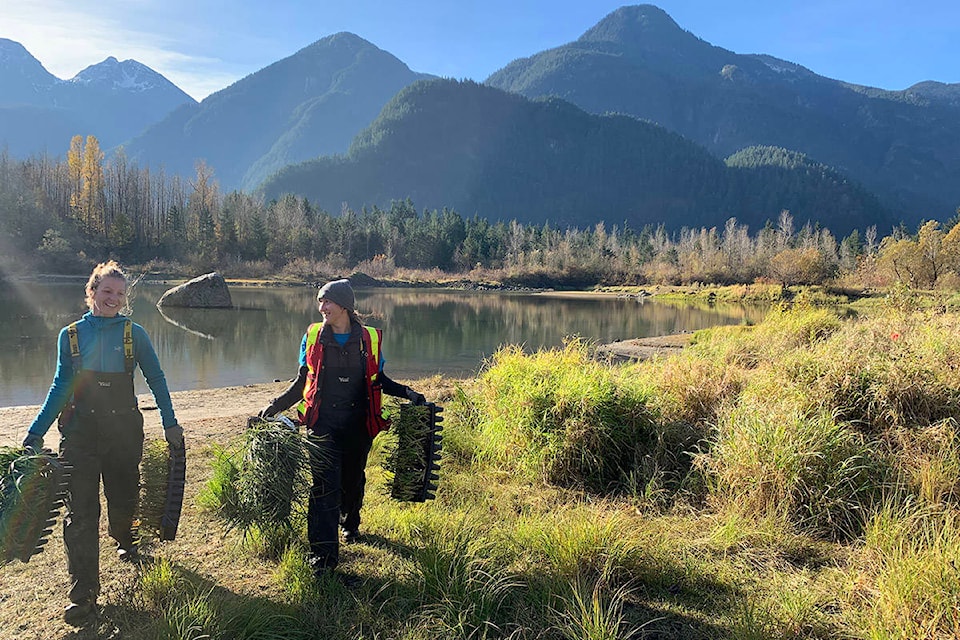A pond in Hope that was a salmon trap for decades will soon be a valuable extension of the local river system.
Starrett Pond, at the old Tom Berry Gravel Pit, gathers water in the spring freshet when the Fraser River rises. The waters spill over the ledge, and with that spillage comes young salmon. Then the water recedes and the salmon are stuck in the shallow, warm and unprotected waters. They never reach the ocean, or the orcas who feed on them.
The pit was created in the 1980s when the provincial government was building the TransCanada Highway. The pond is the result of years of water washing over the banks.
Now, the Fraser Valley Watersheds Coalition (FVWC) is about to restore connectivity to the Fraser River, while making the pond a more salmon-friendly environment. They were in Hope on Saturday, working with a group of about 20 volunteers who showed up eager to help.
Saturday’s job (Nov. 2) was to get 3,600 native plants into the ground along the water’s edge. They’ll provide shade for the salmon in years to come, as well as protection from their natural predators. The plants will also provide slope stability, to ensure that the project is as successful as possible.
Natasha Cox, a registered biology technologist with the coalition uses the “tap, tub, drain” analogy to explain how they’ll eventually bring life to the pond. They have created a “tap” by opening up a connection from the nearby Silver Skagit River, which naturally drains into the Fraser River.
A small amount of water from the Silver Skagit will trickle in, just enough to deepen the pond so that it is more like a lake — the “tub.” They are also pushing through a connection back out to the Fraser which will act as the “drain.”
It will cool the water, deepen the water, and bring much needed oxygen back into the water. Most importantly, Cox says, it will keep the young salmon moving down the Fraser and out into the Salish Sea, where a struggling orca population can feed on them. Those who survive the whales can eventually spawn back up the river.
All five of the Pacific salmon types end up in Starrett’s Pond, where they die. But it’s the chum and chinook that are crucial to the orca diet, Cox explains.
“One of the top reasons they are in decline is a lack of food,” she says. “This will help more of the juvenile salmon into that water for them.”
This is the Fraser Valley Watersheds Coalition first big project in Hope, and they even hope to see Starrett Pond turned into a public park in the future. It is currently the property of the Ministry of Transportation and Infrastructure, and as such it is private property.
The coalition is working closely with the government and has permission to be on the site. They are even partnering with the federal government, through funding and support. The project is made possible by the Department of Fisheries and Oceans Coastal Restoration Fund. The coalition has also partnered with the Hope Mountain Centre, the District of Hope, Hope Communities in Bloom, AdvantageHOPE, the Fraser Valley Regional District, and the DFO Resource Restoration Unit, and they have been using past research for historical data from BCIT.
“This is just step one in a long-term project,” she says, and there is construction to come including a bridge, and more plantings in the future.
To learn more about the FVWC, visit them on Facebook or their website, www.fvwc.ca.
@CHWKcommunity
jpeters@theprogress.com
Like us on Facebook and follow us on Twitter.
